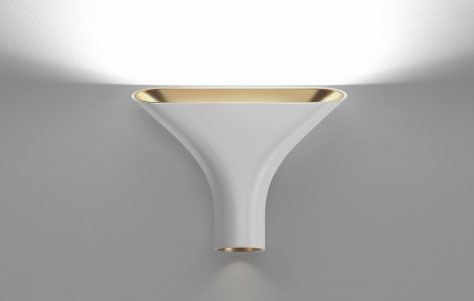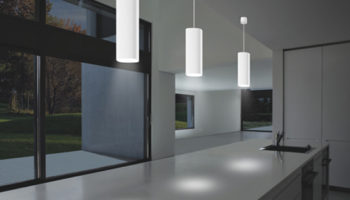Dordoni’s Tau Fuses Ancient and Modern
Despite the urgings of certain party-going compatriots and their attendant kegs of PBR or Keystone Light, I never joined a fraternity, so I'm not too well versed in the significations-arcane and otherwise-of the letters of the Greek alphabet. Good thing for me that most products come with their bit of requisite self-edification; just so, the Tau Wall Lamp by Rodolfo Dordoni for Flos shares a certain symbolic vocabulary with its Phoenician namesake.
As I quickly discovered in my brief research, every Greek letter has multiple meanings beyond their function as place-holder for a specific sound, and Tau is no exception. The meanings that seem most apt for Dordoni's sconce include those of "continuity in electro-flux resonance," "a measure of opacity, or how much sunlight cannot penetrate the atmosphere," and "the lifetime of a spontaneous emission process."
Tau Wall Lamp. Designed by Rodolfo Dordoni.
Of course there's also the matter of Tau's shape–Τ (upper case) or Ï„ (lower), each of which bears a resemblance to the cruciform yet fluid profile of Dordoni's light. The idea behind Tau is several-fold: 1. to synthesize the look of an ancient wall-bound illumination with that of a modern, energy-efficient light; 2. Provide a dual-source for focused and ambient light; and 3. create an eye-catching design with textural and visual contrast. All of these objectives are well-served by Dordoni's die-cast aluminum alloy, halogen bulb, and two-tone tint.
But back to the metaphoric linkage between the two Taus... The lamp exudes an appealing fluidity that's apropos to the evolution of the Greek alphabet. It illuminates an entire space or highlights certain darkly appealing contours; it captures the effect of sunlight poured through a sieve or a focused light thrown to the far end of a cave; and it evokes the crucial icons of the rise of ancient Greece: the epics of Homer and the first Olympic games. Apropos of this last, if in certain installations and particular color schemes it captures the perpetually-burning flame of the Olympic Torch, I wouldn't chalk it up to mere coincidence.
Via NostraForma.








Leave a Reply